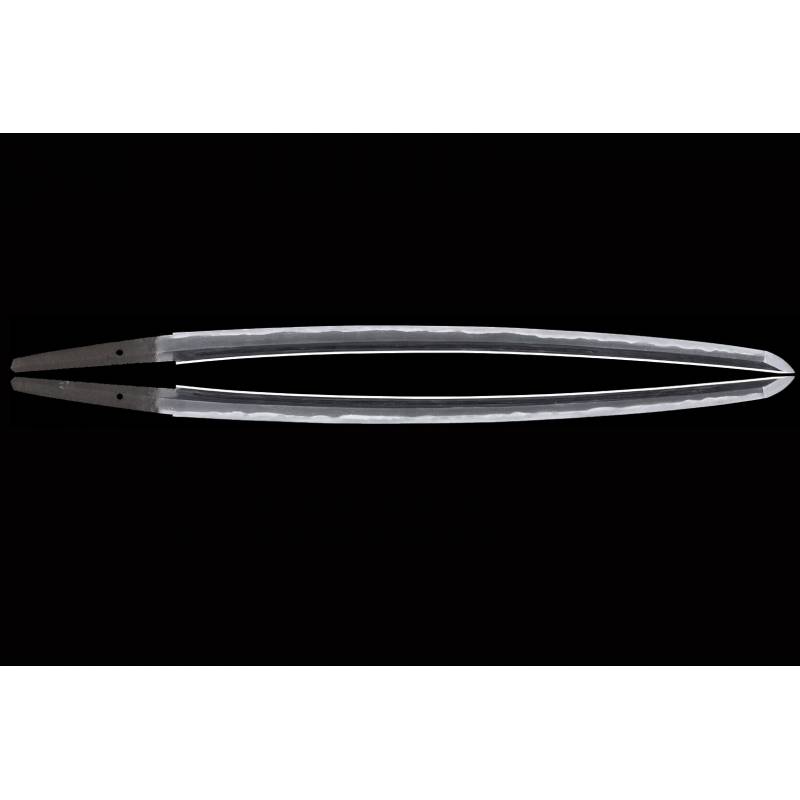







An Echizen Shinto Wakizashi with excellent Koshirae forged around the Edo Period.
Sold
This is a Japanese Mumei Shinto Wakizashi with excellent Koshirae forged around the Edo Period.
The condition is very well and the Wakizashi comes with Koshirae and is in a fine polish.
You can find some nice Hataraki in the blade and the Jigane is hand forged with well grained Itame Hada with with jinie (sprinkled with crystals) and Chikei.
The Gunome and Midare Hamon is Nie deki and Choji Midare. This hamon is bright and is very beautiful. An Ubu style blade with a nice looking deep sori. For a wakizashi this is a regular size blade but is has a healthy and robust appearance. The kissaki, although described as "chu-kissaki" is rather on the big side. An excellent strong looking Wakizashi with Nagareru and clear Jigane. One Mekugi Ana in the Mumei Nakago.
Koshirae :
The Tsuba is round shaped with Kanji. The Fuchi and Kashira are brass with landscape. The Menuiki shows Crab and are engraved with gold color.
Dimensions
Totale lengte:83 cm
Blad lengte: 58,8 cm
Nakago: 15,6 cm
Sori : 1.6 cm
Mekugi : 1
Motohaba (bottom width): 2,88
Sakihaba (yokote width): 2,09 cm
Overall length: 83 cm
Nagasa length: 58,8 cm
Nakago: 15,6 cm
Sori : 1.6 cm
Mekugi : 1
Motohaba (bottom width): 2,88 cm
Sakihaba (yokote width): 2,09 cm
This Japanese Wakizashi is authentic, and the matching NBTHK papers attesting the quality and authenticity.
Inclusive whole Oshigata. Oshigata is used by Japanese appraisers since before the Japanese middle ages, to record all the metallurgical activities in the steel of a Japanese sword that make it unique to any other sword.